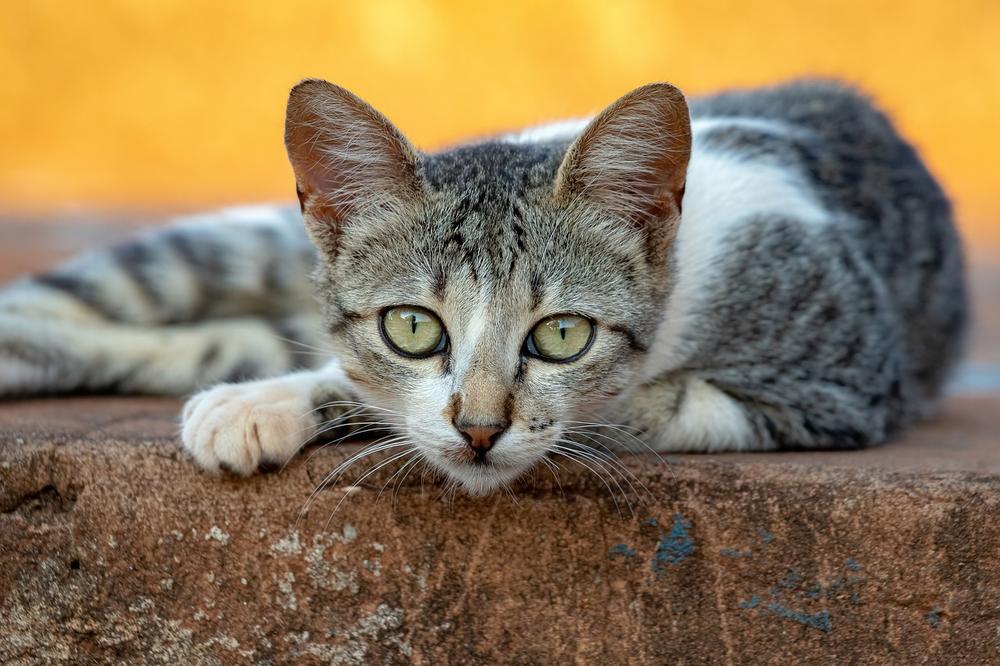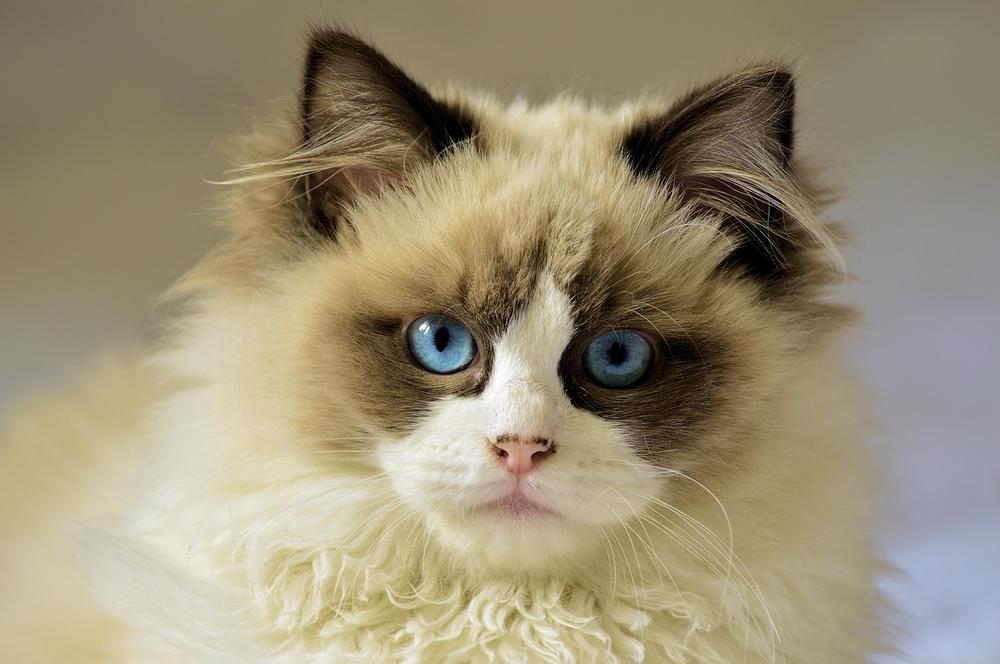Why Are Cats' Tongues Rough? (It's Not What You Think..)

Why do cat tongues feel like sandpaper?
You're probably thinking, "What's the deal with these rough little appendages?" 😺
It's a valid question, my friend.
When we stroke our feline friends and come across their coarse tongues, it's intriguing, confusing even.
But fear not, dear reader, for I have embarked on a quest to unravel this peculiar mystery.
So, grab your cuppa and let's dive into the captivating world of cats' tongues and their undeniably unique texture.
Ready?
Let the adventure begin.
The Papillae: Uniquely Structured in a Cat's Tongue
The papillae in a cat's tongue are an extraordinary feature, allowing them to taste and feel texture in a way humans can only imagine. These unique structures also aid in grooming, keeping their fur clean and helping regulate body temperature. Truly a marvel of evolution.
A cat's tongue is unlike any ordinary tongue you've ever seen; it's a masterpiece of engineering.
You see, the filiform papillae on a cat's tongue are truly remarkable. They're not your average taste buds.
No, no, they're far more extraordinary than that.
Made of resilient keratin (the same material as your nails and hair), these tiny structures serve multiple purposes.
First and foremost, they enable cats to sense taste and texture in a way we can only imagine.
Imagine if you had little hooks on your tongue capable of detecting even the tiniest morsels of food.
It's like having microscopic fingers exclusively dedicated to taste testing.

But hold on, there's even more!
These unique papillae also prove invaluable when cats groom themselves.
The rough texture of their tongues, thanks to those backward-facing barbs, assists cats in keeping their fur pristine by catching stray hairs and dirt.
And we must not overlook a cat's ability to distribute saliva deeply into its coat.
Those fascinating papillae play an essential role in both bathing and regulating body temperature.
So, the next time you witness your feline companion indulging in a thorough self-cleaning session, remember they aren't merely being fastidious - they are actually staying cool!
Therefore, when you admire your cat's delicate and pinkish tongue, bear in mind that it surpasses anything you could find at a hardware store.
Truly a masterpiece crafted by the process of evolution!
Main points I'll expand upon further down this article:
- Cats' rough tongues have physical adaptations essential for eating, drinking, and grooming.
- Barbs on their tongues act as a natural comb, removing tangles and dead hair.
- Filiform papillae stimulate sebaceous glands, spreading natural oils over the coat.
- Spines on their tongues keep the coat tidy and detangle mats.
- Backward-facing papillae efficiently remove dirt, grease, debris, and parasites.
- Tongue adaptations help cats manipulate food with precision and provide a barrier against moisture and environmental elements.
- Barbed tongues aid in self-sufficiency and minimize scent for predator avoidance.
- Grooming serves as a social bonding mechanism within cat social groups.
- Regular grooming is crucial for long-haired cats to prevent discomfort, mats, and tangles.
- Grooming helps maintain cats' overall health and aids in temperature regulation.
The Role of Cat Tongues in Grooming
To understand the role of cat tongues in grooming, here are 12 key points:
- Cat tongues spread natural oils for a healthy coat.
- Tongues serve multiple essential functions.
- Barbed tongues act as natural combs.
- Tangles and dead hair are removed by tongues.
- Filiform papillae stimulate oil glands.
- Natural oils keep coats glossy and well-maintained.
- Spines on tongues tidy up the fur.
- Mats are detangled using these spines.
- Papillae remove dirt, grease, debris, and parasites.
- Adaptations aid in self-sufficiency and bonding.
- Scent is minimized to avoid predators.
- Grooming prevents blockages, fleas, and painful mats.
Regular grooming promotes bonding and all in all wellness. 😺
Now, here's the deal...

Have you ever wondered why a cat's tongue is so rough?
Well, prepare to have your mind blown as we delve into another amazing role that cat tongues play in their daily lives.
It's something that showcases their extraordinary hunting skills and ensures they make the most of every meal.
Get ready to be amazed by the fascinating secrets behind a cat's barbed and multi-functional tongue!
The Mechanical Advantage of Rough Tongues for Catching Prey
Cats' barbed papillae on their tongues provide a mechanical advantage for prey catching. Their rough tongues act like velcro, helping them grip and strip meat from bones. This unique feature aids in survival as obligate carnivores and maximizes energy intake during hunting.
The tongue of a cat is a specialized tool that has barbed papillae, which serve multiple purposes and give the cat an incredible mechanical advantage when it comes to catching prey.
To explain further...
The rough texture of a cat's tongue helps them grip and strip meat from bones, making it easier for them to consume their catch.
This unique feature is essential for their survival as obligate carnivores.
Not only does their rough tongue help tear meat, but it also acts like velcro, securely holding the food while they eat.
Just imagine how useful that would be if you could only use your tongue to eat!
But wait, there's more...
The roughness of their tongues allows cats to effectively eat smaller pieces of food and extract the necessary nutrients.
And here's the interesting part...
Their rough tongues also play a vital role in hunting. By efficiently removing meat from bones, cats maximize their energy intake during intense hunting experiences.
Who would have thought a cat's tongue could be so amazing?
It's not just about satisfying hunger - it's about maximizing energy and survival in the wild.
And now, let me tell you another fascinating aspect of a cat's rough tongue that I bet you haven't heard before!
How Cat Tongues Help With Drinking Water
Cat tongues are absolutely fascinating. They aren't just about grooming themselves, though—they actually play a crucial role in drinking water efficiently.
See, their tongues have this rough surface that serves an important purpose:
It allows them to collect water effectively.
Wondering how?
Let me spill the beans. When cats dip their tongues into water, they create a column between their tongue and lower jaw.
No spills. Not an ounce wasted!
But that's not all...
Their tongues are shaped like spoons, so they can lap up water in quick sips—a sight that's truly mesmerizing.
And that rough texture on their tongues?
It helps them gather water seamlessly, without losing a single drop. These felines are absolute masters when it comes to staying hydrated.
Exploring the Spiny Tongues of Big Cats
Big cats, like tigers and lions, have hardened spines on their tongues.
These spines serve multiple purposes. Firstly, they assist in grooming and capturing prey, allowing the big cats to maintain their regal appearance while also securing their next meal.
Secondly, the spines come in handy during feeding time.
They help the cats pick up and grasp their food, ensuring nothing is left behind.
Lastly, these remarkable spines are exceptionally useful for tearing through meat, effortlessly shredding it apart with grace and precision. In essence, these tongue spines are a vital tool for survival in the wild, proving that even the smallest details can play a significant role in nature's grand symphony.
And that wraps up today's article.
Before you head out, I wanted to check in and ask: Did my blog post help you out? If it did, it would mean the world to me if you could share it with your closest ones. Feel free to click on any of the social media sharing icons to easily spread the word. Your support is greatly appreciated!
Talk soon,
-Sarah Davis